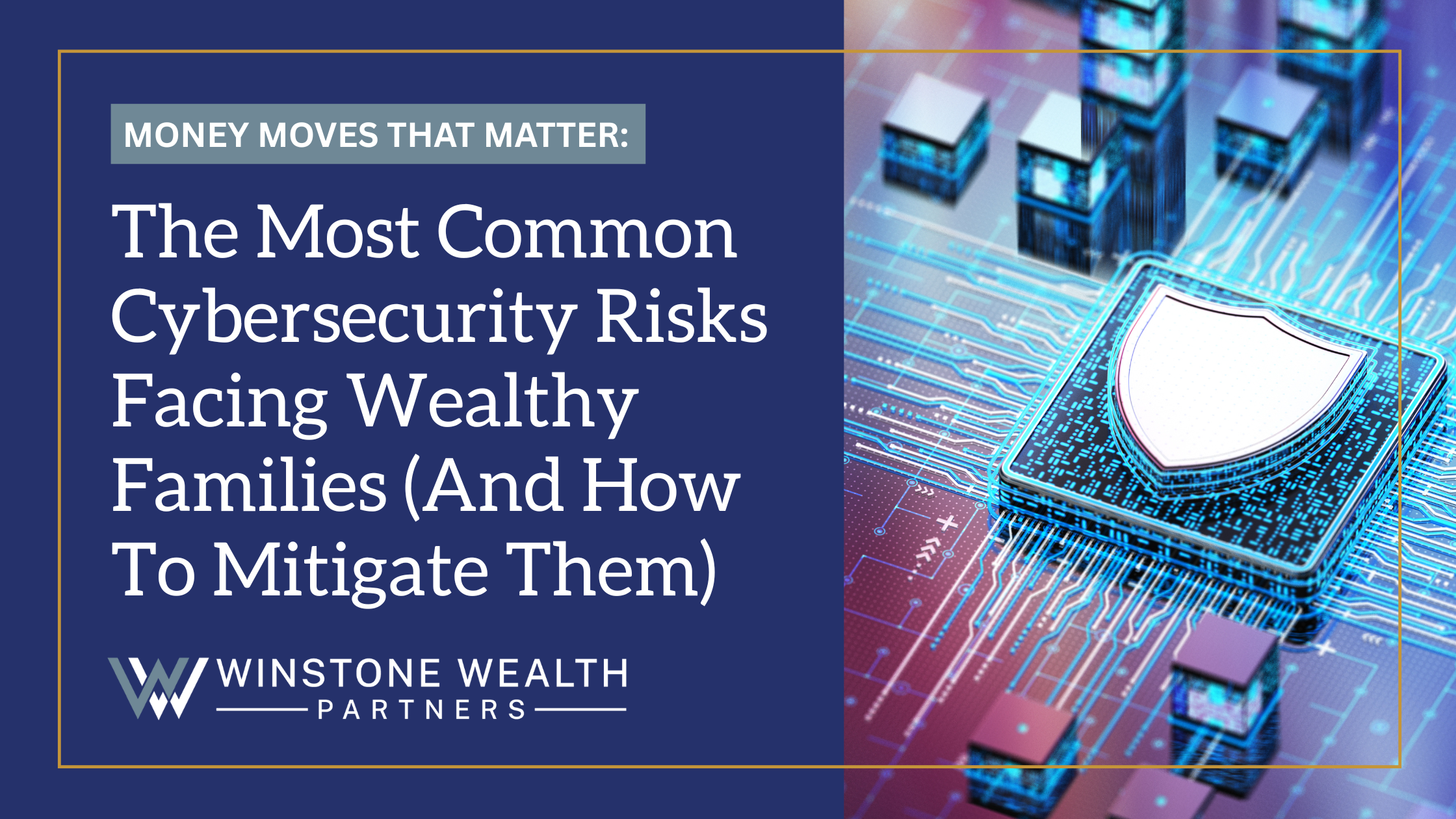October is National Cybersecurity Awareness Month—a good time to recognize that financial well-being today is tied not only to markets, taxes, and estate strategies, but also to how your family manages its digital footprint. Affluent families, in particular, tend to draw more attention from cybercriminals because of their visibility, assets, and influence.
In my work as a financial advisor to high-net-worth families over the past two decades, I’ve seen how a single overlooked detail—an unsecured email account, a phone left vulnerable, or a staff login not updated—can open the door to real consequences. Below are some of the most frequent risks I see, along with practical measures families can take to reduce exposure.
Email & Wire Transfer Fraud
The Risk: Criminals often impersonate advisors, attorneys, or even family members to request transfers or sensitive information.
Ways to Lower the Risk:
- Verify all transfer requests by calling a known number (not one listed in an email).
- Use secure document portals or encrypted email when sharing financial data.
- Train household managers or assistants on common fraud red flags.
Unsecured Personal Devices
The Risk: Phones and tablets typically store banking apps, investment logins, and sensitive correspondence. If compromised, they offer direct access to private accounts.
Ways to Lower the Risk:
- Require strong passcodes and enable biometric logins.
- Set up remote “wipe” features in case devices are lost.
- Keep operating systems and security updates current.
Social Media Oversharing
The Risk: Real-time posts about travel, luxury purchases, or children’s routines give criminals insight into habits and vulnerabilities.
Ways to Lower the Risk:
- Keep accounts private and avoid posting in real time.
- Remind children and teens that their posts can reveal more than intended.
- Consider a family guideline for what is—and isn’t—shared online.
Household Staff & Vendor Access
The Risk: Multiple employees and vendors may have access to passwords, financial tools, or personal accounts. Even well-meaning team members can inadvertently expose information.
Ways to Lower the Risk:
- Provide role-based access with unique logins instead of shared accounts.
- Update or rotate passwords when staff changes occur.
- Consider basic cybersecurity training or awareness sessions for household staff.
Identity Theft & Data Breaches
The Risk: Wealthy individuals are often targets for fraudulent tax filings, credit fraud, or account takeovers. Once personal data is compromised, it can be sold or reused for years.
Ways to Lower the Risk:
- Place a freeze on your credit files at all three bureaus.
- Use credit and identity monitoring services.
- Review credit reports and banking alerts on a regular basis.
Smart Home Technology
The Risk: Internet-connected security systems, cameras, or appliances can be hacked, exposing household details and activity.
Ways to Lower the Risk:
- Change default device passwords immediately.
- Put smart home systems on a separate Wi-Fi network.
- Keep firmware and software updates current.
Final Thoughts
Cyber risk is now part of the broader financial landscape. Just as families review investment allocations or estate documents, it’s worth taking time to evaluate digital exposure and update practices.
At Winstone Wealth Partners, we believe your wealth strategy goes well beyond numbers on a page, and we regularly discuss cybersecurity considerations with clients as part of their overall planning process. If you’re looking for a more holistic wealth management partner, we’d love to talk to you. Go ahead and schedule a complimentary financial consultation with me today: https://calendly.com/winstone-wealth-partners/financial-consultation-with-jeff-green
Please Note: Any opinions are those of the author, are subject to change without notice and are not necessarily those of Raymond James. This material is being provided for information purposes only, is not a complete description and does not constitute a recommendation.

